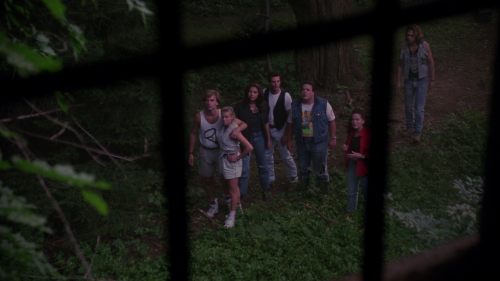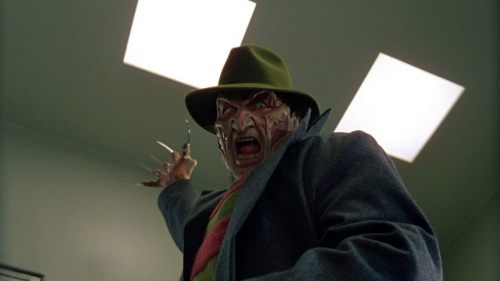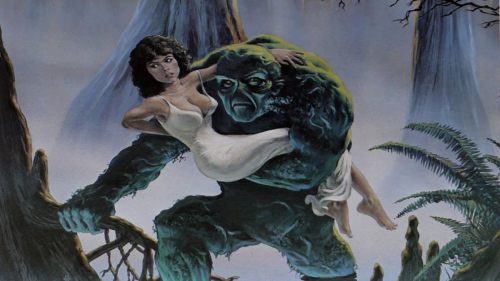How SCREAM Became A Definitive Horror Classic
We are often averse to labeling any film from the ‘90s a “classic.” It was a decade rife with superficial sentiment, denim and flannel, bad bangs and a glorification of teen culture. There is a subset of people who are nostalgic for the ‘90s even though they were too young to experience it, just as there are those who are nostalgic for the ‘80s even though they were still in diapers when that decade came and went. Bestowing the “classic” label on a particular film from the ‘90s is a tough call, which is why the select few films that earn that label have earned it well.
Wes Craven’s Scream is one such film -- no easy feat for a horror film, much less a studio horror film, when there are such precious few of those that are genuinely good. In 1995, its concept was almost revolutionary: a horror film that both honors and deconstructs the slasher sub-genre, that acknowledges its predecessors with affection while also fondly conceding their flaws. There was no better person to make this movie than Craven himself, a man who made iconic contributions to the slasher genre with A Nightmare on Elm Street and, going further back to a more exploitative time, The Last House on the Left.
The opening sequence of Scream serves as a mission statement: it honors the classic trope of a pre-credits kill as Craven lets his audience know that this movie means business and its business is mean, but it also sets the metatextual tone, with Drew Barrymore’s Casey answering the phone to a mysterious psychotic killer who engages her in a deadly game of horror movie trivia. When asked about her favorite horror film, the conversation turns to Craven’s own Nightmare on Elm Street, with Casey joking that the first one was good but the rest of the series sucked. Scream recognizes the cinematic world in which it exists; Barrymore was too famous to play Sidney (she almost did), and thus she serves as a nod to Janet Leigh in Psycho, a major star cast merely to die in the opening scene as a message to viewers: this is not your typical film.
And yet, Scream itself is formulaic, from Barrymore’s death scene to the occasional jump scare, but by blatantly acknowledging these tropes as givens and having his characters joke about living in a movie, Craven is allowed to indulge in the typical.
Craven’s film hit just before a big socio-technological explosion -- it was a time when cellphones were still referred to as “cellular” and when you could count the number of people you knew who owned one on a few fingers. Sidney’s use of her computer to dial in to 911 was cool then, but easily dated now. These technological aspects make Scream seem absolutely ancient in comparison to the proliferation of social media and smartphones that have made horror movie logistics so much more difficult -- this tech has become so prevalent that there are entire horror films centered around it; even MTV’s Scream series has no choice but to incorporate YouTube and Facebook and online bullying as narrative devices.
But the very elements that date Craven’s film also serve to make it a classic -- it remains frozen on a specific point on the horror timeline, its existence a dividing line between then and now. Scream deconstructs its influential predecessors while influencing a new era of horror, and it would be fair to say that mainstream slasher films were never able to live up to the precedent set by Craven’s film. It was often imitated but never duplicated, though it did fall victim to the franchise trap -- giving in to sequels seemed questionable given the film’s motives, but its development into a franchise (which now extends to the aforementioned television series) was inevitable due to its existence not only as a popular horror film, but as one that was so definitive.
Craven’s film affectionately mocks nostalgic culture with a cast of characters so heavily raised on movies that they narcissistically ponder what kind of movie they’re living in with frequent references. Scream’s antagonists subsist on a diet of horror films that feed their sociopathic tendencies -- if it were released today, some might write think pieces about the “problematic” nature of a movie with characters so easily influenced by horror, yet it’s just another of the film’s metatextual layers. Scream itself makes no effort to hide that it is heavily influenced by the genre and its prolific tropes; on the contrary, it happily admits this via film nerd monologues from Jamie Kennedy’s Randy, a video store clerk who essentially serves as Scream’s spokesperson.
It is a film of the ‘90s and for the ‘90s, but its commentary applies even now, as we exist in a culture so eager to prove itself with references, so heavily affected by pop culture that we define the banality of everyday life by identifying with fictional characters. It is a culture that lacks originality, just as Scream’s antagonists are merely aping what they’ve seen in scary movies. We go so far as to not only seek ourselves in the fictional lives of others, but to use that fiction to inform our choices. What would Liz Lemon do?
It’s not that there have not been good slasher films or good scary movies since Scream arrived -- you can find plenty if you know where and how to look for them. But as a mainstream pop culture staple, Craven’s work is classic in both its familiar conventions and what it has to say about who we are and how we digest culture.
This was originally published in the October issue of Birth.Movies.Death. magazine. See Scream at the Alamo Drafthouse this month.



